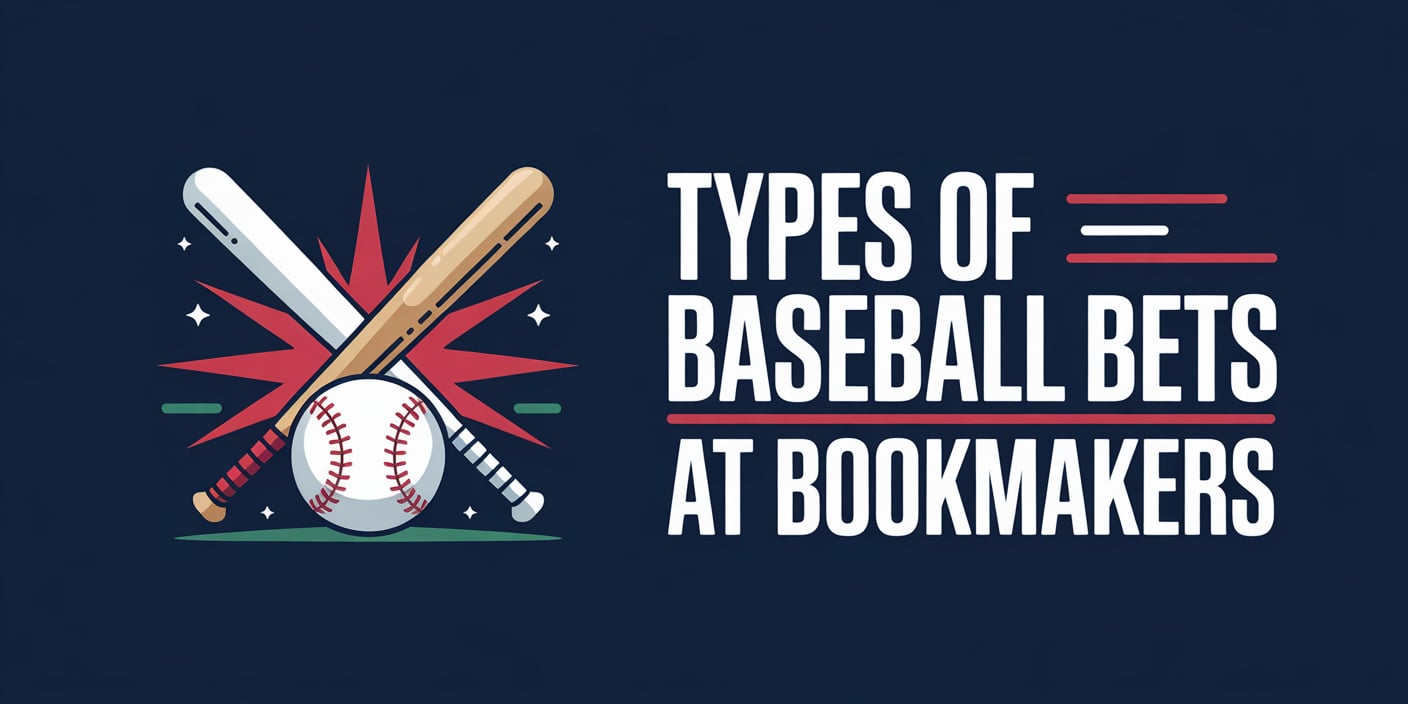Types of Baseball Bets at Bookmakers

Bookmakers typically offer the following standard types of baseball bets:
-
Win of one team in a match or in each inning;
-
Point spreads (handicaps);
-
Various totals: individual, overall, for the entire game, or for a specific inning.
In the pre-match lines, users can bet not only on the outcome, total, and spread for the whole game but also for the first inning. Additionally, the first five innings are highlighted separately, as this period is key for applying point spread strategies. For more accurate wagering, many bettors rely on expert baseball bet predictions.
Live betting is considered the best mode for placing baseball bets. All events include breaks, pitching preparations, and timeouts.
Baseball Betting: Pre-Match Analysis Features
Before placing baseball bets, it's essential to consider key factors that affect the outcome:
-
Pitcher abilities. A team’s success heavily relies on the pitcher's skills. The best pitcher usually plays the first five innings, which is the standard workload for star MLB players.
-
Winning and losing streaks. Teams often experience extended streaks, so current form matters.
-
Stadium characteristics and wind. For example, Colorado and Boston Red Sox home stadiums are known to be windy, while Seattle Mariners and San Francisco Giants play in calmer environments. Windy conditions can increase the likelihood of high totals.
-
Weather conditions. Humidity, wind speed, and precipitation can influence game results.
-
Team dynamics. Player injuries, internal motivation, coaching changes, and other factors should be evaluated.
Inning Draw Strategy
A common strategy is betting on a draw in an inning, often using a progressive system (martingale). This strategy involves:
-
Bookmakers offering low odds on a draw (typically 1.50 to 1.70);
-
Inning draws being quite frequent.
Formula to calculate the next bet size:
(Initial stake + sum of previous losses) / (odds - 1)
While all martingale strategies carry risk, inning draws are frequent—rarely are more than four innings played in a row without a draw.
Example: In a preseason MLB tour on March 12, 2020:
-
10 matches were played;
-
2 games had three consecutive drawn innings;
-
7 had two consecutive draws;
-
Only one game (Philadelphia Phillies vs. Tampa Bay Rays) had a five-inning draw streak (score remained 0:0).
Lower-tier leagues often have higher draw odds—up to 2.05.
Under 0.5 Total Strategy
This is also a progressive strategy where you bet on Under 0.5 runs per inning until the first win. Odds range from 1.50 to 1.70. Since many inning draws end 0:0, this method is widely used.
Betting on Favorites vs. Underdogs
This involves point spread betting to reach odds around 2.20. Since many MLB games (or the first five innings) are close, bets should follow this logic:
-
Choose games where the underdog plays away;
-
Give the favorite a -1.5 to -3.5 spread if the odds for the home win are below 1.80;
-
Analyze team history at the current stadium.
Alternatively, you can take a positive spread for a home underdog, provided they’re motivated and have a strong starting pitcher.
Financial Strategy in Baseball Betting
Even the best strategies can fail. It's crucial to follow sound bankroll management:
-
Choose a strategy: flat betting, Kelly criterion, fixed percentage, etc.;
-
Limit each bet to no more than 15% of your bankroll;
-
Stick to consistent bet sizes;
-
Avoid betting on every game—focus on one league and learn its nuances.
Any system only works if it’s backed by solid match analysis and financial discipline. In MLB betting, knowing the stats is essential.
When Stats Fail: Special Cases
Doubleheaders
MLB teams usually play 2–4 games in a series. A doubleheader occurs when a game is postponed due to weather and rescheduled as two games in one day (day and evening). To manage player fatigue, teams rotate pitchers and hitters. Since 2021, these games last only 7 innings.
It's better to skip such games, but if betting, wait for official lineups and consider the shortened format when betting on totals or spreads.
Colorado Rockies
They play at a high-altitude stadium (Coors Field), where thinner air allows balls to travel farther. Despite increasing the field size, home runs are still frequent. However, fielding outs has become harder due to the large outfield.
If you're risk-averse, avoid betting on the Rockies. If you do, adjust for higher scoring by their opponents and avoid relying on pitching stats.
Tampa Bay Rays Pitchers
Tampa was the first MLB team to successfully adopt the opener pitcher strategy: instead of a traditional starter, a relief pitcher starts the game to eliminate the top 3–4 batters, then is replaced by a pitcher facing weaker hitters. This affects pitching stats and game outcomes.
Post All-Star Break
MLB's All-Star Game splits the season. After the weeklong break, some players lose rhythm, while others bounce back. June is considered the most consistent month for MLB betting. It's best to avoid bets in the first week following the All-Star Game.
